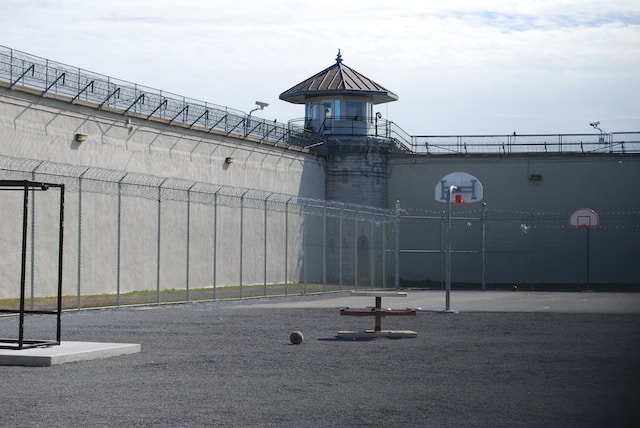
Hey there, reader! We’re glad you stopped by to learn about a frequently misunderstood topic: the differences between county jails and state prisons. You might wonder, “Aren’t they just the same thing?” Well, not exactly. While both are part of the United States’ criminal justice system, they serve different purposes and house different types of inmates – which is why a Lucas County booking can differ from incarceration in a state prison facility.
Understanding the distinctions between county jails and state prisons is crucial for several reasons. First, it can help dispel some common misconceptions about incarceration. Secondly, it’s essential for those involved in policymaking, advocacy, or simply seeking to be well-informed citizens. By understanding these differences, we can have more productive conversations about the criminal justice system, potential reforms, and the best ways to allocate resources for rehabilitation and reentry programs.
In this article, we’ll dive deep into the key differences between county jails and state prisons, such as inmate populations, funding sources, and the programs offered at each type of facility. So, buckle up and get ready to learn more about the criminal justice system in the United States!
County Jails 101
Let’s start our journey by taking a closer look at county jails. These facilities play a significant role in our criminal justice system, but they’re often overlooked or misunderstood. In this section, we’ll explore what county jails are, their purpose, and the inmate populations they house.
The definition and purpose of county jails mean that they’re:
- Short-term holding facilities: County jails are designed for short-term stays, typically housing inmates for a few days, weeks, or months. They serve as a temporary holding place for individuals awaiting trial, sentencing, or transfer to other facilities.
- Managed by local government or county sheriff’s department: County jails are usually operated by the county sheriff’s department or local government, which means they’re subject to the policies and budget constraints of their respective counties.
Their inmate population consists of:
- Pretrial detainees: A significant portion of county jail inmates are pretrial detainees, meaning they haven’t been convicted of a crime yet and are awaiting trial. These individuals are presumed innocent but may be held in jail due to various factors, such as flight risk, inability to post bail, or danger to the community.
- Individuals serving short sentences for misdemeanors: County jails also house those who have been convicted of less severe crimes, known as misdemeanors. These inmates are typically serving short sentences of less than a year.
- Probation and parole violators: In some cases, individuals who have violated the terms of their probation or parole may be sent to county jail for a short period as a consequence of their non-compliance.
State Prisons
Now that we’ve explored county jails, let’s turn our attention to state prisons. These facilities have some distinct differences from county jails, and understanding their purpose, management, and inmate populations will help you get a clearer picture of the criminal justice system as a whole. So, let’s dive in!
State prisons are mainly:
- Long-term correctional facilities: State prisons are designed for long-term incarceration, housing inmates who have been convicted of more severe crimes, known as felonies. Inmates in state prisons usually serve sentences that last several years or even decades.
- Managed by the state’s department of corrections: Unlike county jails, state prisons are managed by the state government, specifically by each state’s department of corrections. This means they’re subject to the policies and budget priorities of the state government.
The inmates found in state prisons are:
- Convicted felons serving longer sentences: The primary population in state prisons consists of inmates who have been convicted of felonies, which are more serious crimes than misdemeanors. These individuals typically serve longer sentences, often exceeding a year.
- Offenders with more serious criminal records: Inmates in state prisons generally have more serious criminal records compared to those in county jails. This can include offenses like murder, rape, robbery, and other violent or high-level property crimes.
Key Differences between County Jails and State Prisons
Based on all of the above, we can conclude that the main differences between county jails and state prisons are:
- Duration of stay: As mentioned earlier, county jails are designed for short-term stays, while state prisons house inmates serving longer sentences. Inmates in county jails may be there for a few days, weeks, or months, whereas those in state prisons typically serve sentences lasting several years or even decades.
- Inmate classification: County jails mainly house pretrial detainees, individuals serving short sentences for misdemeanors, and probation or parole violators. On the other hand, state prisons accommodate inmates who have been convicted of more serious crimes, known as felonies. This distinction in the severity of offenses is a crucial difference between the two types of facilities.
- Facility conditions and resources: County jails often face budget constraints that can lead to overcrowding, limited healthcare services, and fewer educational or vocational programs. Conversely, state prisons generally have larger budgets, allowing for better facilities, more comprehensive healthcare, and a wider range of programs to support rehabilitation and reentry.
- Rehabilitation and reentry programs: While both types of facilities aim to rehabilitate inmates, state prisons typically have more resources dedicated to this purpose. They offer a broader range of educational, vocational, and mental health programs to help inmates reintegrate into society upon release. County jails, due to their short-term nature and budget constraints, may not have as many resources available to support rehabilitation and reentry efforts.
